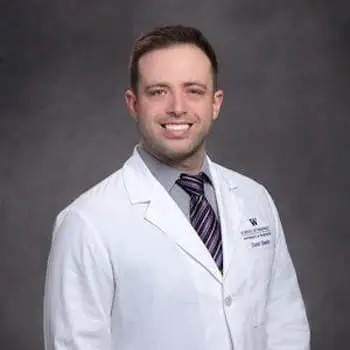Dihydrocodeine is an opioid medication used to treat pain. It is usually combined with other active ingredients like acetaminophen and caffeine to improve treatment effects.
Dihydrocodeine is an opioid medication used to treat pain that cannot be treated by non-opioid pain medications. Since opioids are addictive, dihydrocodeine should only be prescribed after non-addictive treatments fail.
Dihydrocodeine is available as a prescription in the United States as a combination tablet or pill.
Dihydrocodeine is formulated with acetaminophen and caffeine into Panlor (tablets) or Trezix (capsules). The combinations are a Schedule III substance according to the Drug Enforcement Agency (DEA). This means they have a recognized medical use but are addictive and habit-forming.
Treatment Can Be Life Changing. Reach out today.

Dihydrocodeine addiction treatment is the same as other opioid addiction treatment programs, typically involving a medical detox and inpatient or outpatient rehab. The drug is rarely prescribed in the United States, however, and addiction professionals may be less familiar with it than codeine, a similar opioid.
Since most people are familiar with codeine but not dihydrocodeine, a conversion factor is useful for understanding it. Dihydrocodeine and codeine are 1:1 equivalent, meaning that 30 mg of codeine is the same as 30 mg of dihydrocodeine in terms of pain control and addictive potential.
Dihydrocodeine Addiction Treatment Options
Compared to other opioids, codeine and dihydrocodeine are the least potent. The two drugs require higher doses to treat pain and are also less addictive. However, no one should mistake dihydrocodeine as non-addictive. All opioids have a very high potential for misuse and addiction. Less potent opioids can act as a gateway to more potent ones like oxycodone, heroin and fentanyl. Regardless of the opioid, addiction has the same consequences.
Dihydrocodeine addiction treatment follows the general pathway of detox, withdrawal and recovery. Treatment plans are tailored to the needs of the individual and may be done in a variety of different settings.
How Long Does Dihydrocodeine Addiction Treatment Take?
Dihydrocodeine addiction treatment usually lasts somewhere between a few weeks and a few months. This period depends on how severe the drug misuse was and how the body readjusts to biology without opioids.
Drug addiction treatment should last at least 90 days to be effective. People on medication-assisted treatment (methadone or buprenorphine) can expect treatment to last at least 12 months. Evidence shows this is the most effective treatment for opioid addiction. Research has repeatedly shown that longer treatment produces better outcomes, but this will always depend on individual circumstances.
What Does Dihydrocodeine Addiction Treatment Cost?
Dihydrocodeine addiction treatment costs vary, but many insurance companies will cover the cost. The best way for someone to learn about their coverage is to call the number on the back of their insurance card.
If a person has no insurance or their insurance won’t cover treatment, low-cost and free options are available. The cost of treatment is discussed in more detail once someone enters a treatment program.
Choosing a Dihydrocodeine Treatment Center
Picking the right opioid addiction treatment center is a matter of asking the right questions and getting good information. Some examples include:
Comfort
- Are rooms single-person or shared?
- Are units inclusive or divided? (are people with different drug rehab needs mixed together or separated into units?)
- Is this a single-gender or all-gender facility?
- How does the staff make you feel during calls and visit?
Location
- Is it close to home?
- Are family and friends allowed to visit?
- Is the facility far enough away from negative influences?
- Do I want the facility far from home for more privacy during treatment?
Treatment Approach
- Does the facility have a medical staff?
- Are medications used during treatment?
- What is a typical day like?
- Does this facility treat psychiatric disorders or just addiction issues?
Our Drug Detox and Inpatient Rehab Center

The Recovery Village Palm Beach at Baptist Health
4905 Lantana Rd
Lake Worth, FL 33463
What to Expect When You Go to Rehab
People attending rehab should expect to be placed out of their comfort zone. Opioid addiction treatment in rehab centers is designed to heal months or years of damage caused by addiction. This may feel uncomfortable at first, but it will ultimately make life more rewarding and fulfilling.
Dihydrocodeine addiction treatment will follow the normal pathway of opioid treatment: detox and withdrawal, followed by remission and continued maintenance treatment. Treatment starts in an inpatient or residential facility for the most severe addictions. After acute withdrawal, treatment continues on an outpatient basis where those with mild to moderate addictions begin their treatment.
What Happens After Rehab?
People who complete rehab are given treatment resources to continue living a sober life. Some types of resources include:
- Support: Options for continued support include addiction support groups like Narcotics Anonymous. Many people maintain a therapist trained in addiction medicine.
- Relapse prevention: Prevention has many factors involved. It requires successful management of addiction triggers and causes of stress and anxiety. An addiction counselor will work closely with the individual for proper relapse prevention planning.
- Sober living: Sobriety is more than just saying “no.” Sober living is a lifestyle encouraged through healthy habits and activities. There are also sober living homes that can help people better integrate back into daily life.
Dihydrocodeine Addiction Treatment Effectiveness
In opioid addiction treatment, the goal is to return the person to normal functioning in areas of daily life, such as at school or in the workplace. Research has shown that most people who attend treatment stop using drugs and improve their relationships and activities at home, work and school. They also leave treatment with effective resources that help them prevent relapse and avoid uncomfortable triggers in the future.












